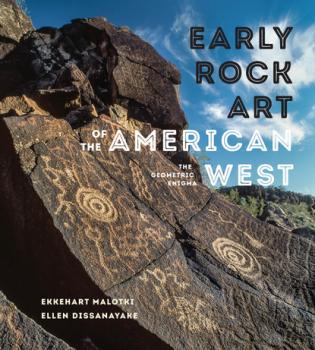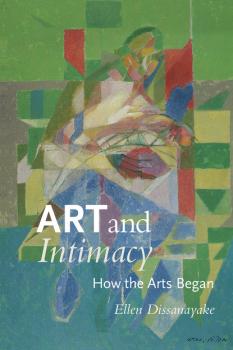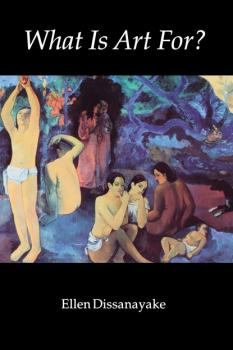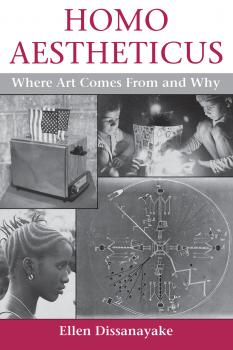Ellen Dissanayake
Список книг автора Ellen DissanayakeEarly Rock Art of the American West
The earliest rock art�in the Americas as elsewhere�is geometric or abstract. Until�Early Rock Art in the American West,�however, no book-length study has been devoted to the deep antiquity and amazing range of geometrics and the fascinating questions that arise from their ubiquity and variety. Why did they precede representational marks? What is known about their origins and functions? Why and how did humans begin to make marks, and what does this practice tell us about the early human mind?With some two hundred�striking�color images and�discussions�of chronology, dating, sites, and styles, this pioneering investigation of abstract geometrics on stone (as well as�bone, ivory, and shell)�explores its wide-ranging subject from the perspectives of ethnology, evolutionary biology, cognitive archaeology, and the psychology of artmaking. The authors� unique approach instills a greater respect for a largely unknown and underappreciated form of paleoart, suggesting that before humans became�Homo symbolicus�or even�Homo religiosus, they were mark-makers�Homo aestheticus.
Art and Intimacy
To Ellen Dissanayake, the arts are biologically evolved propensities of human nature: their fundamental features helped early humans adapt to their environment and reproduce themselves successfully over generations. In Art and Intimacy she argues for the joint evolutionary origin of art and intimacy, what we commonly call love.It all begins with the human trait of birthing immature and helpless infants. To ensure that mothers find their demanding babies worth caring for, humans evolved to be lovable and to attune themselves to others from the moment of birth. The ways in which mother and infant respond to each other are rhythmically patterned vocalizations and exaggerated face and body movements that Dissanayake calls rhythms and sensory modes.Rhythms and modes also give rise to the arts. Because humans are born predisposed to respond to and use rhythmic-modal signals, societies everywhere have elaborated them further as music, mime, dance, and display, in rituals which instill and reinforce valued cultural beliefs. Just as rhythms and modes coordinate and unify the mother-infant pair, in ceremonies they coordinate and unify members of a group.Today we humans live in environments very different from those of our ancestors. They used ceremonies (the arts) to address matters of serious concern, such as health, prosperity, and fecundity, that affected their survival. Now we tend to dismiss the arts, to see them as superfluous, only for an elite. But if we are biologically predisposed to participate in artlike behavior, then we actually need the arts. Even – or perhaps especially – in our fast-paced, sophisticated modern lives, the arts encourage us to show that we care about important things.
What Is Art For?
Every human society displays some form of behavior that can be called “art,” and in most societies other than our own the arts play an integral part in social life. Those who wish to understand art in its broadest sense, as a universal human endowment, need to go beyond modern Western elitist notions that disregard other cultures and ignore the human species’ four-million-year evolutionary history.This book offers a new and unprecedentedly comprehensive theory of the evolutionary significance of art. Art, meaning not only visual art, but music, poetic language, dance, and performance, is for the first time regarded from a biobehavioral or ethical viewpoint. It is shown to be a biological necessity in human existence and fundamental characteristic of the human species.In this provocative study, Ellen Dissanayake examines art along with play and ritual as human behaviors that “make special,” and proposes that making special is an inherited tendency as intrinsic to the human species as speech and toolmaking. She claims that the arts evolved as means of making socially important activities memorable and pleasurable, and thus have been essential to human survival.Avoiding simplism and reductionism, this original synthetic approach permits a fresh look at old questions about the origins, nature, purpose, and value of art. It crosses disciplinary boundaries and integrates a number of divers fields: human ethology; evolutionary biology; the psychology and philosophy of art; physical and cultural anthropology; “primitive” and prehistoric art; Western cultural history; and children’s art. The final chapter, “From Tradition to Aestheticism,” explores some of the ways in which modern Western society has diverged from other societies–particularly the type of society in which human beings evolved–and considers the effects of the aberrance on our art and our attitudes toward art.This book is addressed to readers who have a concerned interest in the arts or in human nature and the state of modern society.



